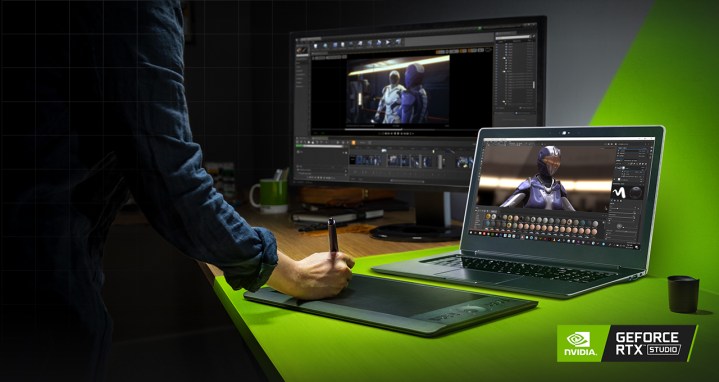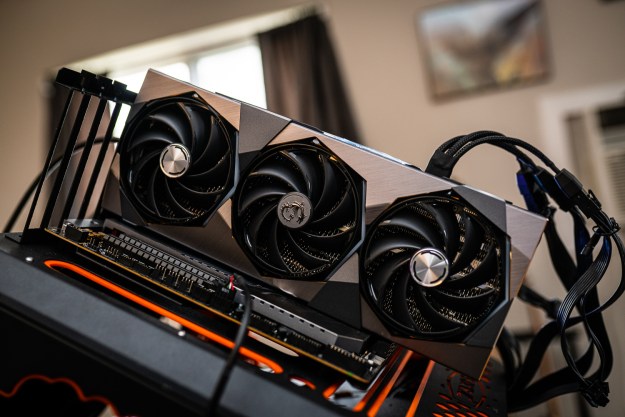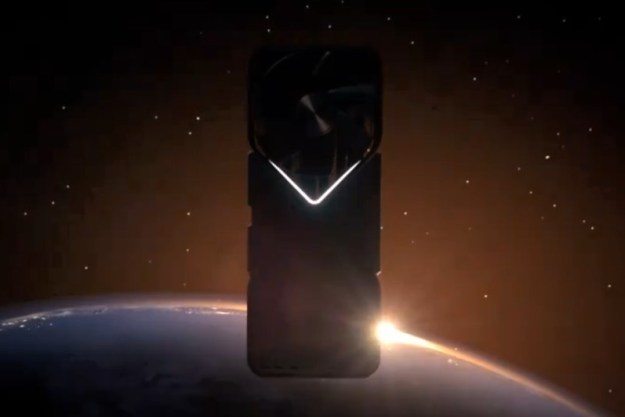
Even though Nvidia received a lot of buzz in the gaming world late last year when it launched its new RTX graphics card based on the company’s Turing architecture, there are still not a lot of games on the market that come with support for ray tracing, a rendering feature that Nvidia has been pushing heavily. Not only does ray tracing bring better visuals to gaming, but it also gives players an advantage by helping them spot their enemies sooner, according to Greg Estes, Nvidia’s vice president of corporate marketing and developer programs. Now, to spur support for ray tracing and to help creative professionals generate more content with this feature, Nvidia is launching 10 new RTX Studio laptops at the SIGGRAPH computer graphics technology conference, bringing the total number of notebooks with RTX graphics to 27. Earlier this year at Computex, Nvidia and its partners launched 17 RTX Studio laptops.
These 10 new notebooks will come from popular PC brands — like Lenovo, HP, Dell, and Boxx — and will come with either Nvidia’s GeForce RTX graphics or the more professional class Quadro RTX GPU designed for mobile workstations. Nvidia is targeting these laptops at people working in fields from the media and entertainment industry (to speed up the process of creating realistic computer-generated imagery (CGI) in films) to product and architecture design and those working in scientific research. Given their support for high-end graphics, the RTX Studio laptops will be versatile enough to play high-end gaming titles on the go or for content creation work. All the notebooks will support Nvidia’s Max Q design, making them thinner and lighter than traditional mobile workstations in this space, and they start at approximately $1,700.
10 new RTX Studio laptops
Lenovo is partnering with Nvidia to release the ThinkPad P53, ThinkPad P73, Y740 15 Studio Edition, and Y740 17 Studio Edition laptops, while HP will include its ZBook 15 and ZBook 17 in the RTX Studio family. These models will be joined by the Dell Precision 7540 and 7740 notebooks as well as Boxx’s GoBoxx SLM 15 and 17 models.

“Now with this capability that we have, creative users of all types can count on having a thin and light system as their personal system that can run all of these 40 plus RTX accelerated applications and be confident that they’re tested,” Estes said of the 27 total RTX Studio laptops. “They’ve been optimized. They have GPUs that have big frame buffers that will support it. They’ve got all of the performance to run not only one of these apps but multiple apps.”
In addition to RTX graphics housed in a Max-Q design, these laptops will also support a display with up to 4K resolution with HDR, Intel Core i7 and Core i9 processors, memory that starts at 16GB, and a solid-state drive with a minimum capacity of 512GB, Estes and his team revealed. Given their positioning for content creation, they’ll come with dedicated drivers and SDKs.
New ray tracing-enabled creative applications
Nvidia also announced that a number of new applications will come with support for ray tracing. To date, more than 40 design and creative applications have launched with support for RTX graphics, including big applications from Adobe, Autodesk, Unity, Pixar RTP, and more. The new RTX-enabled applications launching at SIGGRAPH include Adobe Substance Painter, Blender Cycles, Autodesk Flames, Dax3D, D5 Fusion, Foundry Modo, and Keyshot.
“And then the last two are really special and important to us,” Estes said. “Foundry Modo and Keyshot — neither one of those applications has been GPU-accelerated before. They’ve both been CPU only. And now at SIGGRAPH, they’re coming over to join the party and take amazing advantage of our new RTX acceleration for their products.”
Nvidia also announced five new applications that support Nvidia’s Studio drivers, including Autodesk Arnold, Blender, Cinema 4D, Octane Render, and Vegas. “And we optimize these drivers for performance for these applications. So they’re designed and they’re tested,” Estes said.
Editors' Recommendations
- Nvidia RTX 50-series graphics cards: news, release date, price, and more
- Nvidia is bringing ray tracing and DLSS 3 to your car
- Why I’m feeling hopeful about Nvidia’s RTX 50-series GPUs
- Nvidia’s RTX Video can upscale blurry YouTube videos
- Here’s how AMD counters Nvidia’s big RTX Super launch



